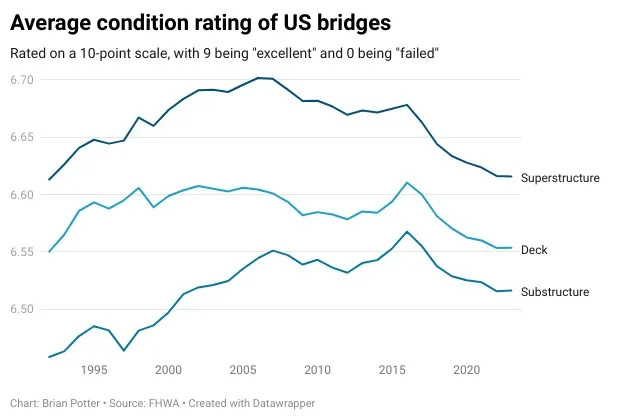From here.
Destroying Russian Targets From Beyond Line Of Sight
Essentially, at this point, the Ukrainian counteroffensive is trying to use non-line of sight weapons (mostly howitzers and surfaced launched guided missiles) to wipe out Russia's heavy military equipment (e.g. artillery batteries, rocket launchers, tanks, infantry fighting vehicles, armored personnel carriers, anti-aircraft weapons, and radar batteries) and fixed military base structures (e.g. military barracks, fuel storage tanks, and ammunition storage buildings) on Ukrainian territory.
This tactic is viable because Ukraine has been provided with Western surface launched guided missiles and intelligence from its Western allies and Western provided reconnaissance drones, regarding the location of enemy targets.
Ukraine Can Launch Its Strikes From Safe Positions
These Western supplied guided missiles directed at targets identified with Western help can be launched by Ukrainian forces from positions of relative safety. This is because the Western supplied surface launched guided missiles have superior range and accuracy to Russian canon artillery.
Russia did has a limited supply of mildly inferior surface launched guided missiles that could have threatened Ukrainian forces beyond canon artillery range. But Russia has mostly exhausted its supply of guided missiles.
Russia still has some long range unguided or minimally guided missiles. But these missiles are inaccurate and it doesn't appear that Russia has the intelligence and reconnaissance resources to precisely identify targets for them either. Russia appears to be using these inaccurate long range missiles mostly to terrorize more or less random civilian targets in the Ukrainian interior as a way of expressing dissatisfaction with Ukrainian actions it can't address militarily. Russia also has short range unguided rockets for its attack helicopters and ground batteries, which are also quite inaccurate. But Russia's remaining far less precise missiles aren't very effective against specific Ukrainian military targets, and even these inferior missiles are in short supply in the Russian arsenal.
Also, Ukraine has enough anti-aircraft capabilities, such as infantry carried anti-aircraft missiles called MANPADs (as well as more potent anti-aircraft missiles) to discourage attacks on its forces at fairly short ranges from Russian attack helicopters and ground attack aircraft. Russian attack helicopter and ground attack aircraft must operate at short ranges that make them vulnerable to Ukraine's Western supplied MANPADs because Russia has few longer range air to ground guided weapons.
Russian Can't Replace Its Equipment And Soldier Losses
The other key factor that helps Ukraine's new tactic of destroying Russian heavy military equipment and fixed military bases with non-line of sight weapons make sense is that Russia does not have military equipment stockpiles or the industrial capacity (of its own or through allies who can supply it with military equipment reliably), which are sufficient to replace its lost military equipment quickly.
While Western economic sanctions haven't crushed the Russian economy to the extent diplomats had hoped as punishment for their completely unjustified invasion of Ukraine, these economic sanctions have been sufficient to greatly constrict Russia's ability to obtain military equipment to replace its losses from foreign suppliers.
Likewise, Russia doesn't have large numbers of well trained soldiers that it can deploy to backfill the casualties its soldiers are suffering in the Ukraine War. Russia is mostly replacing its soldiers who are dead, injured, captured, or have deserted, with minimally and hastily trained, and minimally equipped, young and reluctant conscripts. Few Russians, other than prison inmates recruited by the Wagner mercenary force Russia has hired, appear to be volunteering to join its military to help make up for its losses.
Russia also appears to be incapable of activating the hundreds of thousands of reserve forces it has on paper. This could be because their readiness, even if they could be activated, is probably no better than the readiness of its fresh conscripts. This could also be because Russia doesn't want to incur the political backlash and stir the resistance to its Ukrainian military operations that a mass mobilization of these reserves might trigger.
The U.S. Military Would Have First Secured Air Superiority
In a U.S. military operation, the task of taking out the opposing force's heavy military equipment and fixed military base structures would have done with a sustained period of fixed wing aircraft sorties. The U.S. would have started with strikes from stealth aircraft to take out anti-aircraft defenses and destroy enemy air-to-air fighter aircraft. Once anti-aircraft defenses were neutralized and air superiority was secured, the U.S. would have taken out the remaining targets from fighter aircraft carrying guided bombs and non-stealth bombers carrying guided bombs. U.S. spy planes and drones, and U.S. spy satellites would have identified targets.
But, of course, U.S. military doctrine has at its foundation the fact that the U.S. has the largest and most advanced air force in the world (secured with a military budget vastly larger than that of any other country in the world), and the U.S. has effectively unlimited supplies to state of the art ultra-precise guided missiles and bombs that achieve something very close to a one-shot, one-kill ratio in practice.
The Military Consequences Of A Lack Of Air Superiority
Ukraine can't use the standard U.S. military tactics described above because it has a small and not state of the art (e.g. non-stealth) air force.
Russia can prevent Ukrainian fighter aircraft from securing air superiority with its larger although also not state of the art air force, and with Russia's fairly effective anti-aircraft weapons. Indeed, anti-aircraft capabilities appear to be one of the few areas where the strength of the Russian military that was widely assumed prior to the Ukraine war actually proved to be true.
Ukraine's inability to secure air superiority has also prevented it from using military transport planes and helicopters to cross over Russian mine fields and defensive lines to put their ground forces in a position to strike from behind Russian defensive lines with more than small, special operations type units.
Russian mine fields and defensive lines aren't impenetrable, but they are sufficient to keep its mix of Soviet designed tanks, infantry fighting vehicles, and armored personnel carriers, and modestly superior Western supplied version of these heavy military ground vehicles at bay.
On the other hand, Ukraine's also surprisingly effective air defenses and its small remaining air force are still sufficient so far to prevent Russian from gaining air superiority either. Ukraine's ability to prevent Russia from securing air superiority is one of the main reasons that Ukraine hasn't suffered a rout at the hands of Russian forces.
The Impact Of Russia's Nuclear Arsenal
If Russia had not had nuclear weapons, there is little doubt that the United States and its allies would have used their potent and advanced air forces to secure air superiority for Ukrainian forces, which would have led to Russia's swift and total defeat, and which would also have led to many lost Russian military aircraft.
Russia's air force is large and reasonably modern, but it aircraft aren't as advanced as state of the art Western military aircraft, its precision air to ground weapons are scarce and not as good, and its pilots are less well trained. In a battle for air superiority with Western air forces over Ukraine, the Western forces would almost certainly prevail (despite modern Russian air defenses at the margins of Russian and Belorussian controlled territory which are still not very effective against stealth aircraft). Russian military aircraft would suffer disproportionate losses, although the Western air forces would not escape the conflict unbloodied and would lose some planes as well.
But, because the United States and Ukraine's other Western-aligned allies have feared that direct participation in the war between Russia and Ukraine could trigger a Russian nuclear strike on the U.S. or one of its allies, the West has refrained from decisively intervening in the conflict in this way.
































